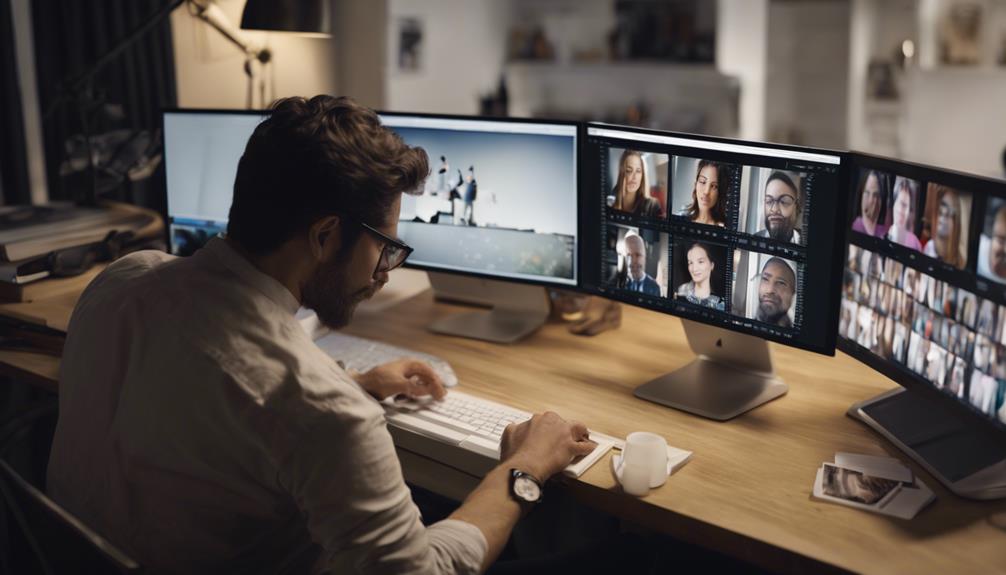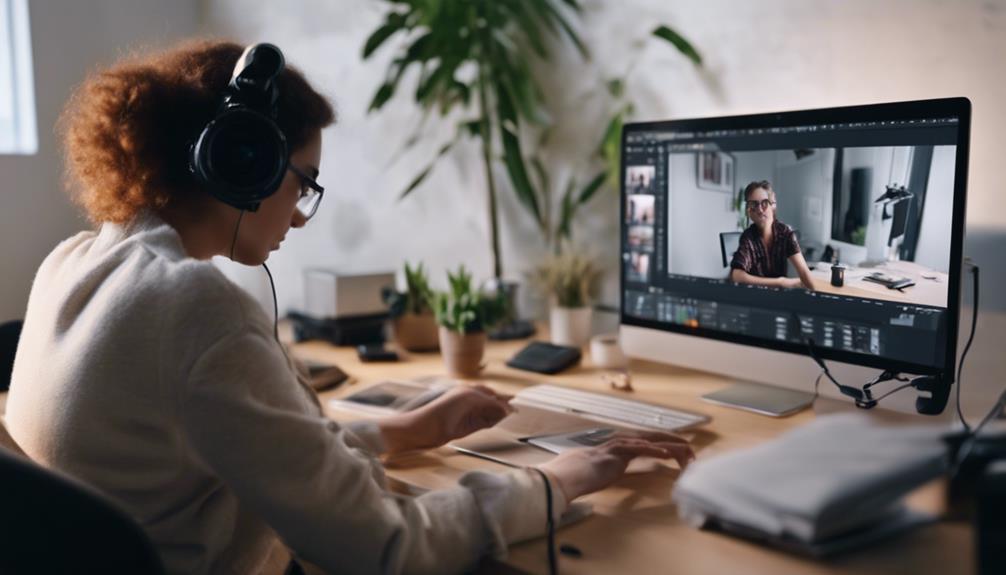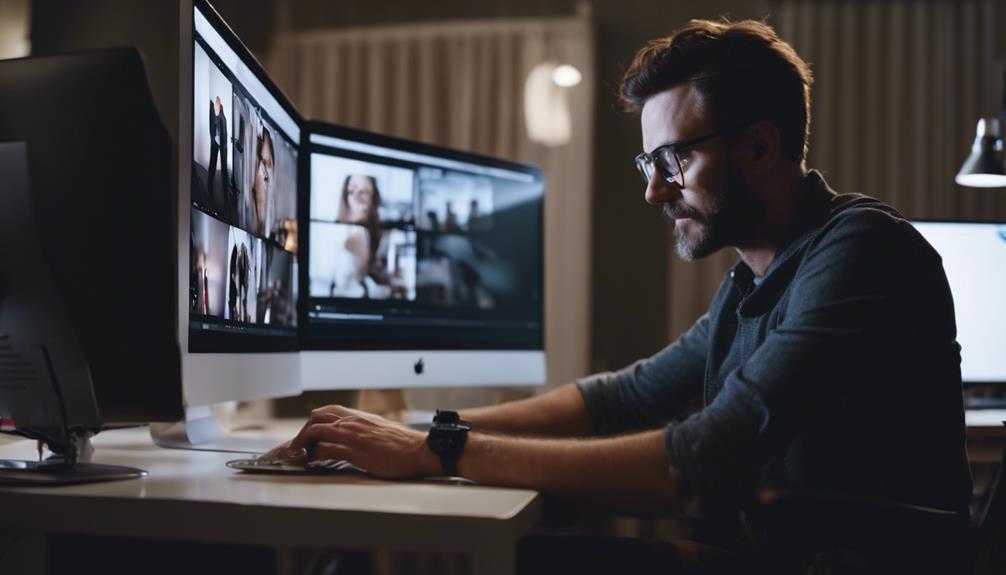To train your virtual assistant for photography tasks, understanding their existing skills is crucial. By evaluating their proficiency in editing, composition, and camera handling, you can tailor the training to their specific needs. However, the key to effective training lies in more than just assessing abilities. It involves strategic planning, resource allocation, and continuous support. Let’s explore how each of these elements contributes to shaping a well-rounded and capable photography assistant ready to tackle any project with finesse.
Assessing Current Skills
Before diving into training your virtual assistant for photography tasks, begin by assessing their current skills in image editing, composition, and camera operation. Skill evaluation is essential to identify areas where improvement strategies can be implemented effectively. Start by having your virtual assistant provide samples of their previous work or complete specific tasks to gauge their proficiency level.
For image editing, observe how they enhance colors, adjust lighting, and retouch photos. Assess their understanding of composition by evaluating their ability to frame shots creatively and utilize techniques like leading lines or the rule of thirds. When it comes to camera operation, test their knowledge of different settings, lenses, and shooting modes.
Create a detailed report outlining strengths and weaknesses in each skill area to tailor the virtual assistant training specifically to their needs. By understanding their current abilities, you can develop a targeted training plan that focuses on enhancing their photography skills efficiently.
Providing Training Materials
Assessing your virtual assistant’s current skills in photography tasks sets the foundation for effectively providing tailored training materials that cater to their specific needs and areas for improvement. To enhance their learning experience, consider creating interactive tutorials that cover essential photography concepts, editing techniques, and workflow organization. These tutorials can include step-by-step instructions, visual aids, and quizzes to reinforce knowledge retention.
In addition to tutorials, hands-on exercises are invaluable for practical skill development. Provide assignments that simulate real photography scenarios, such as portrait sessions, product shoots, or landscape photography. Encourage your virtual assistant to apply the concepts learned in the tutorials to these exercises, fostering a deeper understanding of how to execute tasks effectively.
Setting Clear Expectations
To ensure successful training outcomes, clearly outline the specific tasks, responsibilities, and performance expectations for your virtual assistant in the realm of photography. Start by setting detailed goals for each project or task, outlining what needs to be achieved and by when. This provides a clear roadmap for your virtual assistant to follow. Progress tracking is essential; establish milestones and checkpoints to monitor their advancement and ensure they are on the right path.
Communication is key when setting expectations. Clearly convey your requirements, preferred methods of communication, and any specific guidelines or preferences you have. Encourage an open dialogue where your virtual assistant feels comfortable asking questions or seeking clarification. This fosters accountability, ensuring that both parties are aligned on the tasks at hand.
Scheduling Regular Check-Ins
Regular check-ins are vital to maintaining effective communication and monitoring progress with your virtual assistant in photography tasks. These check-ins serve as opportunities for goal setting and progress tracking, ensuring that both you and your assistant are aligned on the tasks at hand. When scheduling these regular meetings, consider using various communication strategies to maximize their effectiveness.
During these check-ins, it’s important to discuss any challenges or roadblocks your assistant may be facing. Implement problem-solving techniques to address issues promptly and keep the workflow moving smoothly. By maintaining open lines of communication and addressing problems as they arise, you can prevent potential delays in your photography projects.
Set a consistent schedule for these check-ins to create a routine that both you and your assistant can rely on. This regularity fosters a sense of accountability and helps build a strong working relationship. Remember, these meetings are not just for monitoring progress but also for fostering collaboration and offering support when needed.
Offering Constructive Feedback
Provide specific and actionable feedback to guide your virtual assistant in improving their photography skills and performance. Constructive feedback is essential for their growth and development in handling photography tasks effectively. Here are some tips to help you offer valuable feedback:
- Performance Evaluation: Conduct regular performance evaluations to assess your virtual assistant’s progress and identify areas for improvement.
- Communication Strategies: Clearly communicate your expectations and provide examples to help your assistant understand what needs to be done.
- Development Opportunities: Offer opportunities for training and skill development to enhance your assistant’s photography capabilities.
- Goal Setting: Collaborate with your assistant to set specific, measurable, achievable, relevant, and time-bound (SMART) goals to keep them motivated and focused on improvement.
Frequently Asked Questions
How Do I Ensure My Virtual Assistant Maintains Data Confidentiality?
To maintain data confidentiality with your virtual assistant, emphasize the importance of data security during training. Implement privacy measures like secure file sharing and password protection. Remember, 58% of data breaches involve insiders, so vigilance is key.
Can My Virtual Assistant Edit Photos in a Specific Style?
You can definitely train your virtual assistant to edit photos in a specific style. By providing clear examples, detailed instructions, and consistent feedback during their training, you can ensure they master the art of replicating your desired editing style.
What Should I Do if My Virtual Assistant Misses a Deadline?
Oh, don’t worry about missed deadlines. It’s always fun dealing with the consequences, right? Hold your virtual assistant accountable, communicate openly, and set clear expectations to avoid future mishaps. You got this!
How Can I Help My Virtual Assistant Improve Communication Skills?
To enhance communication skills in your virtual assistant, prioritize regular check-ins, provide constructive feedback, and encourage open dialogue. Implement training sessions focusing on active listening and professional etiquette. Support their growth in remote work by fostering a collaborative environment.
Is It Possible to Train My Virtual Assistant on Editing Software?
Yes, it’s possible to train your virtual assistant on editing software. Start with basic software proficiency training, then gradually introduce advanced editing techniques. Provide hands-on practice, offer guidance, and encourage creativity to enhance skills.



